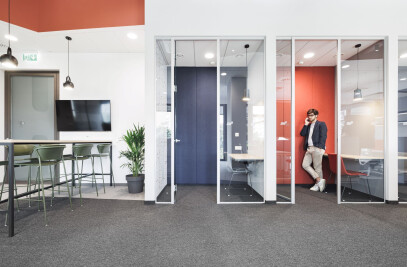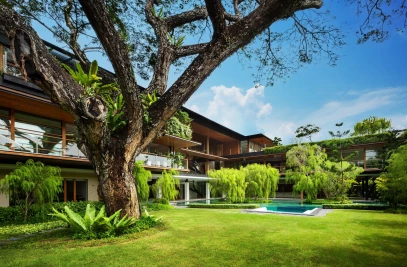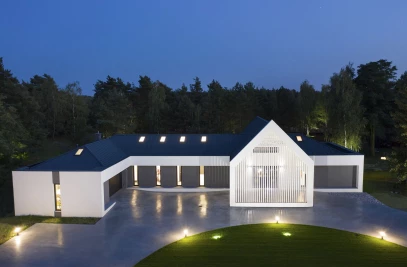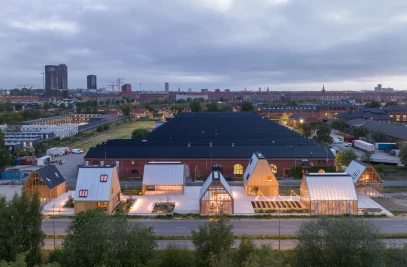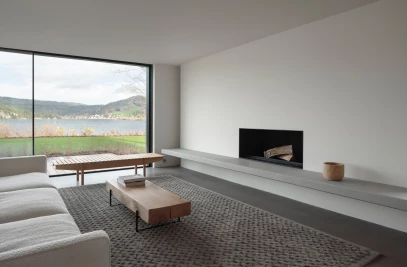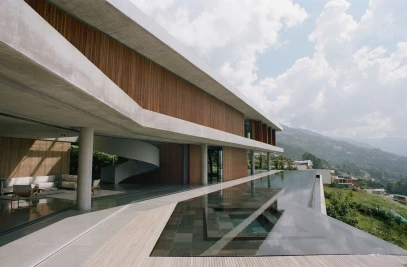For paper and corrugated cardboard manufacturer SAICA, innovation is at the heart of their manufacturing processing. Therefore, the new R&D&I Centre by IDOM naturally reflects the essence of the company’s work and its innovative ethos.
Perhaps most visually noticeable for a distinctive façade of slatted louvers that features a light and paper-like nature, the more profound concept behind the building sees innovation manifested through the building’s functional layout and sustainability strategies.
Function:
The building is designed as an open-plan concept for maximum spatial flexibility. The concept also considers an optimal surface-to-perimeter ratio and a central core for informal meetings and communication.
The optimal form of the building resolves its programmatic needs over two floors. The first is a rectangle of 2,000 m2 on the ground floor and a second rectangle of 1,195 m2 on the first floor. The program is arranged accordingly, with laboratories located on the ground floor where there is easy accessibility for equipment and materials. The National Design Center, located on the floor above, hosts more creative work, accommodated within offices and meeting rooms, including those associated with the laboratories below.
These rectangular floorplates are united with a central core that centralizes vertical and horizontal connection, reducing the number of corridors. The main core also accommodates space for informal meetings and, in its design, allows additional light to enter the building.
Sustainability:
The scheme utilizes active strategies to achieve near zero emissions, including geothermal energy with an active heat recovery scheme, thermo-active structure with a TABS system, and indicators for air conditioning reinforcement.
Meanwhile, passive strategies include maximizing thermal insulation, solar protection through cantilevers, and the implementation of horizontal slats.
The expressive and sustainable envelope combines natural lighting, transparency, and protection from the sun via solar protection elements and wide overhangs that respond uniquely to the building’s four different orientations.






























